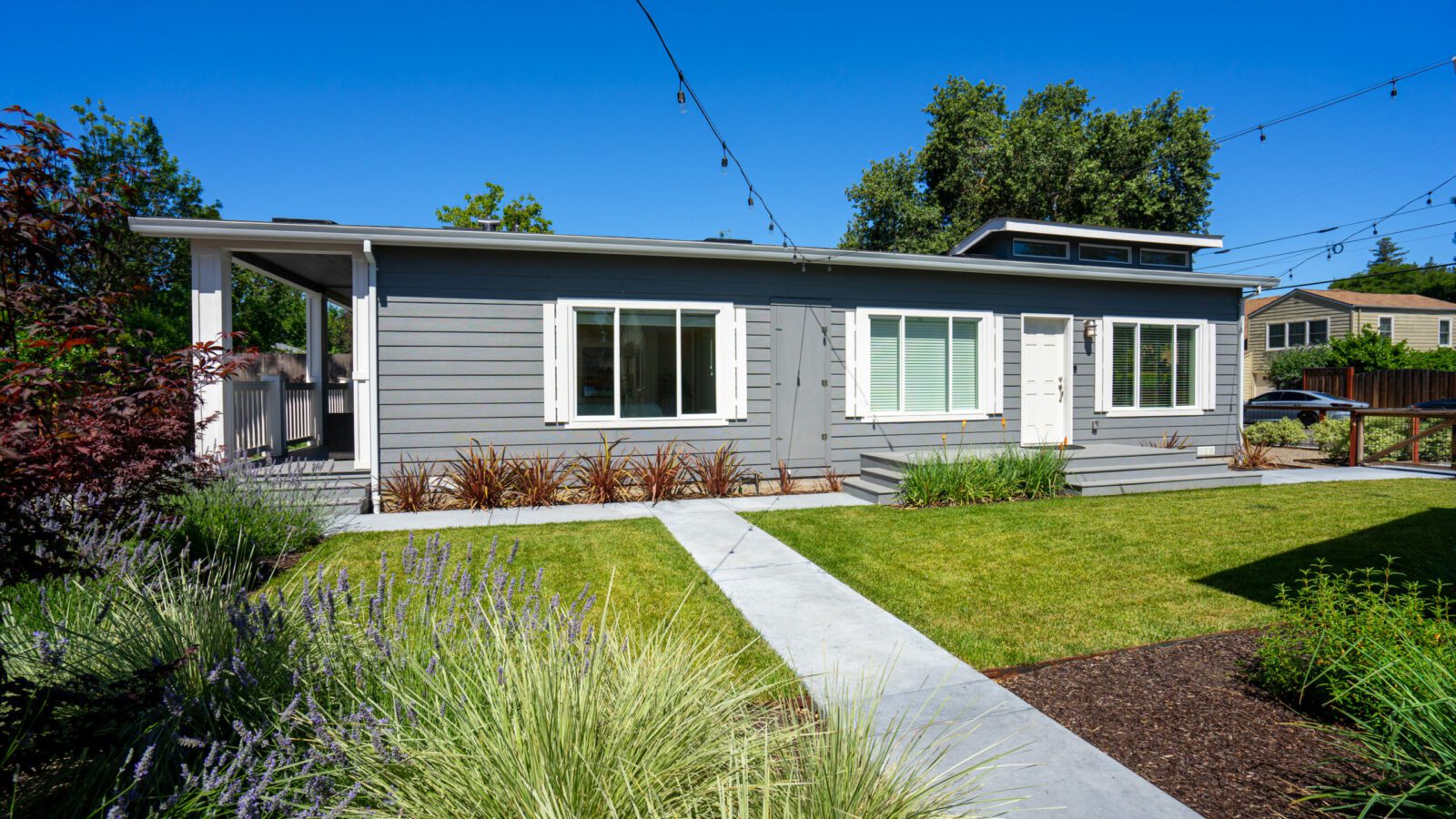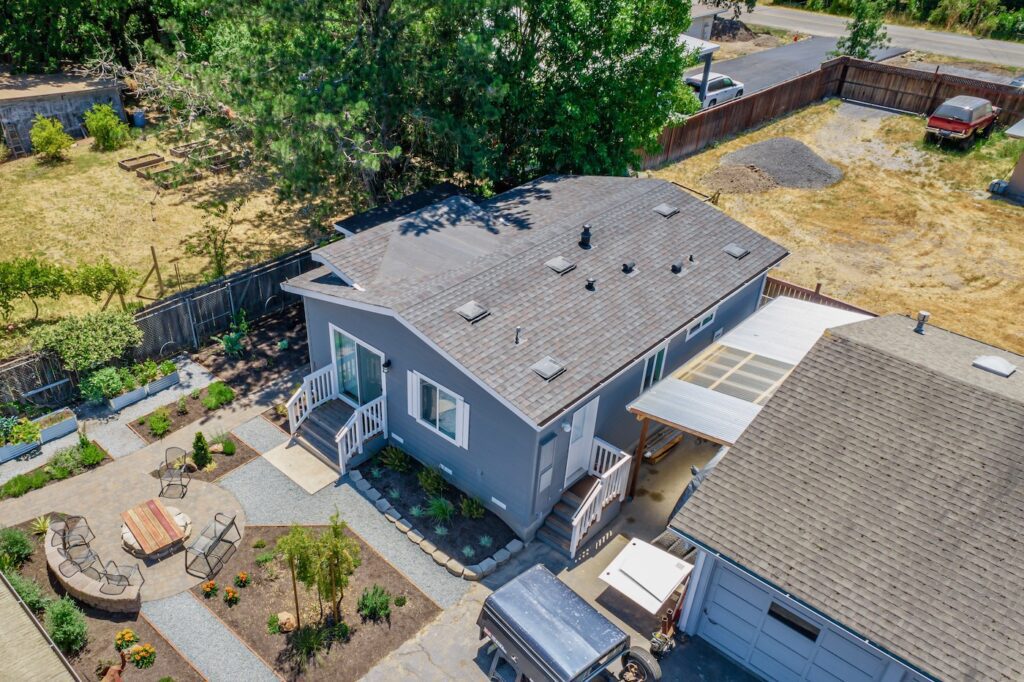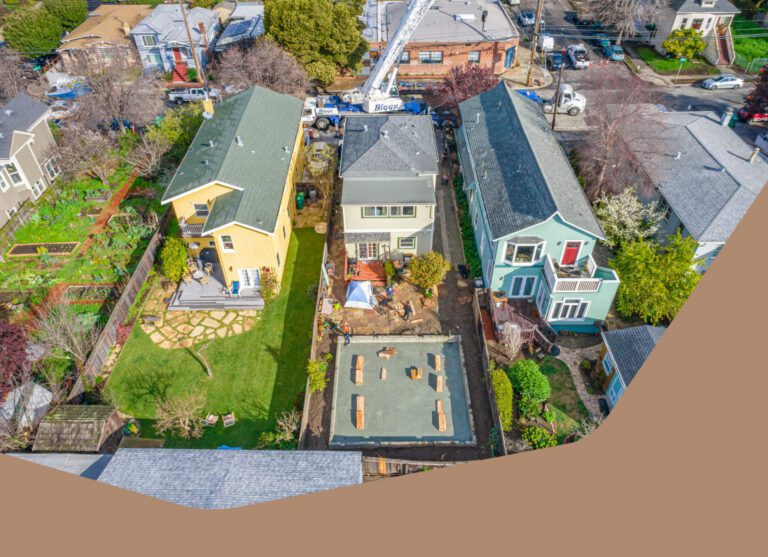While they tend to be fewer than a mob and tote handmade signs instead of pitchforks, opponents of accessory dwelling units are making their voices heard. At town halls, on social media, and in the news, they’re seeking to stem the tide as local governments increasingly turn to ADUs as a viable solution to dire housing shortages. Here we’ll examine some of the biggest ADU myths.
Myth #1: ADUs cause overcrowding.
Facts: In 1970, the average newly built single-family home size was 1,500 square feet, and the average household size was 3.6 people. In 2020, the averages are 2,261 square feet and 2.5 people.1 That’s 30 percent fewer people in 50 percent bigger spaces today than 50 years ago! Clearly, there’s more than enough room. And an ADU is a single-family home, not a high-rise or a tenement. Claiming that ADUs cause overcrowding is like saying a three-car garage isn’t big enough.
Moreover, city planners consider infill—turning unused lots in developed areas into housing, offices, etc.—a much better solution to population growth than urban sprawl. See some of the reasons below.
Myth #2: ADUs ruin the character of neighborhoods.
Facts: This argument is classist and anti-equity at heart. It can also have a subconscious or conscious racial-profiling aspect. Truth is, many customers purchase their ADU to house family members, boosting a sense of community and stability. Where ADUs are used as low-income housing, they help to reduce homelessness, allow people in service jobs (who are the backbone of a thriving community) to afford to live there, and boost both equity and goodwill.

Myth #3: ADUs are ugly and shoddy.
Facts: An ADU can be just as beautiful and high-quality as a primary home; just look at Villa’s models. And while the quality of illegally built units may run the gamut, every legal home must be built to rigorous state or local government construction standards. In fact, Villa’s models exceed federal standards. Most detached ADUs are built in backyards anyway, and have minimal visual impact from the street.
Myth #4: ADUs are bad for the environment because they create heat islands.
Facts: ADUs tend to be much smaller than the average single-family home, and the environmental benefits of smaller homes dwarf the disadvantages of any heat islands created. Study after study shows that smaller homes use less of the earth’s resources in countless ways, from fewer trees cut down to less oil and gas used. In fact, one writer specializing in ADUs estimates that “a detached ADU of 700 square feet will have a long-term climate change impact that is 50 percent less than a ‘standard-sized’ house of 2,262 square feet.”2
Infill housing in particular helps the environment because (a) it reduces car and other transportation use, which in turn reduces both traffic and exhaust emissions that are toxic to people and the planet; and (b) it’s built on already developed land rather than in greenfield areas.

Myth #5: ADU residents drain community resources.
Facts: Residents pay taxes that go to supporting and improving infrastructure, schools, and parks. Residents also buy goods and services from local businesses, keeping employment levels stable, money recirculating locally, and the community thriving. According to a UC Berkeley study:
A $100,000 ADU generates an additional $80,000 of indirect and induced spending in the economy, and if most purchases are made locally, each ADU creates one year-long local job. Thus, construction of 4,000 ADUs locally would mean 4,000 local jobs.3
In turn, local businesses donate more to local charities than national businesses do.4 And infill reduces commuting distances, which lowers transportation costs—so people have more money to spend locally. All in all, more residents means more community resources.
Other myths
There’s also simply no evidence to support the assertions that ADUs increase crime, bring down property values, generate more garbage, and the like. While this form of housing hasn’t been studied extensively yet, we highly recommend reading the 13-part series on the volunteer-run website Accessory Dwellings. It examines with a level head many topics surrounding ADUs.
You can also check out these nationwide advocacy organizations:
YIMBY Action
National ADU Association
ADU Coalition
Sources
1. U.S. Census Bureau:
https://www.census.gov/prod/3/97pubs/97statab/construc.pdf; https://www.census.gov/content/dam/Census/library/visualizations/time-series/demo/families-and-households/hh-6.pdf; https://www.census.gov/construction/chars/highlights.html; https://www.census.gov/content/dam/Census/library/visualizations/time-series/demo/families-and-households/hh-6.pdf
2. https://accessorydwellings.org/2014/07/09/are-adus-green-housing/
3. https://frameworks.ced.berkeley.edu/2011/accessory-dwelling-units/
4. https://ced.msu.edu/upload/reports/why%20buy%20local.pdf

